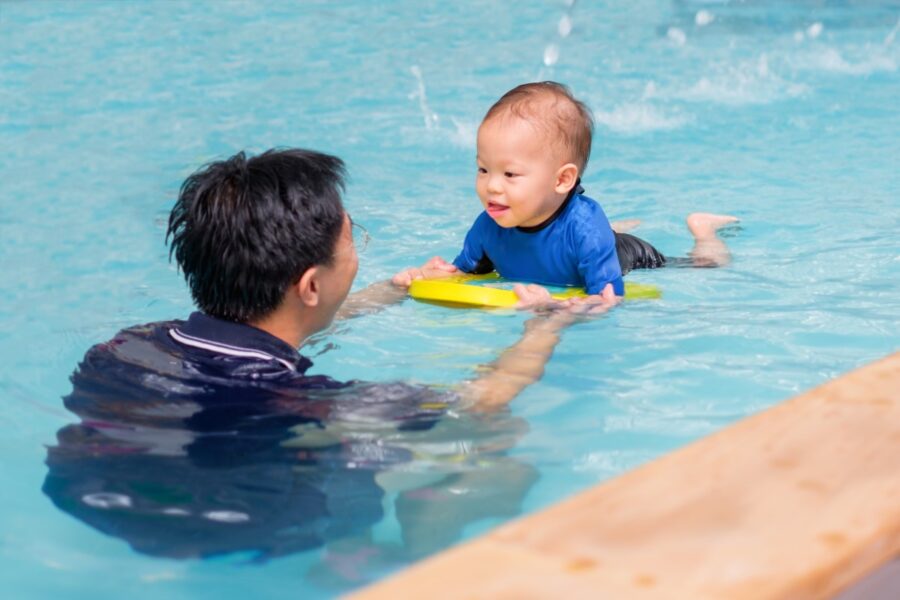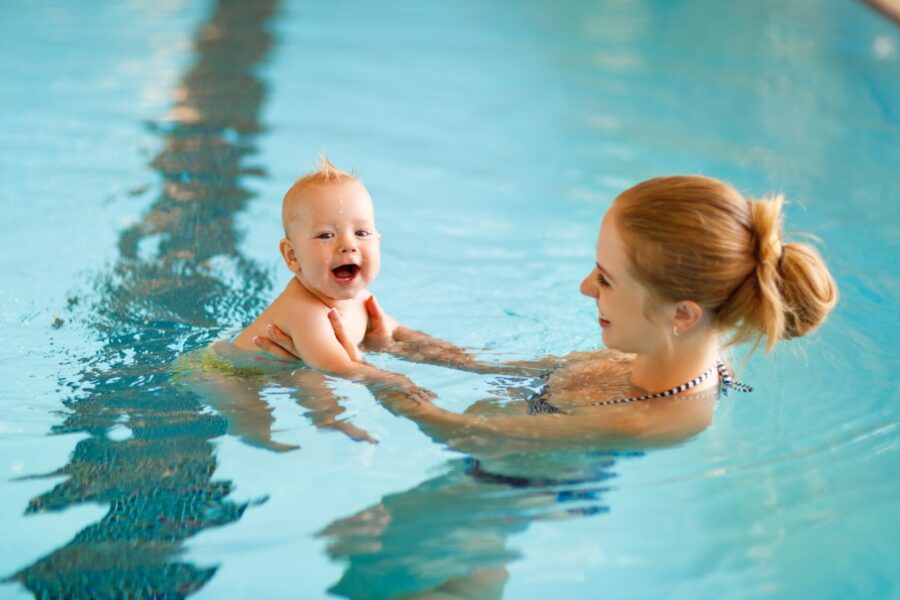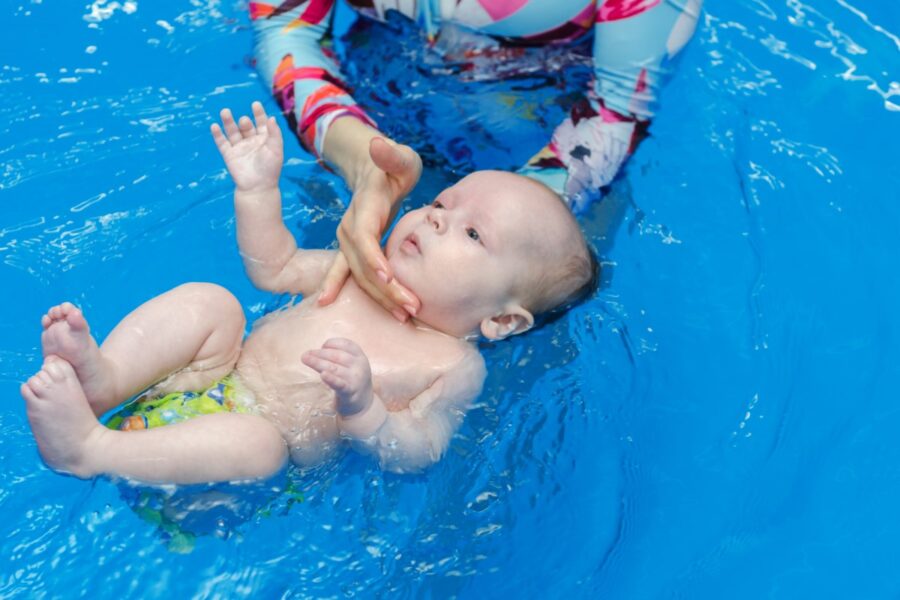
It’s time to swim with your baby for the first time!
Jumping in the pool for the first time with your little one is an exciting yet nerve-wracking experience. We may have addressed your concerns in our last article. However, you might have some other questions. How do you hold your baby? Which position should your baby be in?
Even if you’re working with an instructor, there are some things you should know. Don’t worry; AquaMobile has you covered!
Eye Contact
Before you swim, you want to establish trust with your baby. Eye contact is the best way to do so! A recent study discusses the effectiveness of eye contact; researchers observed an infant’s brain waves using a skull cap with electronic nodes. They found the following:
- Infant brain waves sync up with their mother’s during eye contact
- Infant tried to communicate more while making eye contact
The physical aspect connects to the psychological aspect. Eye contact is a silent form of communication, so the child attempts to vocalize more when looking at their mother. Swimming is a bonding experience that teaches your baby talking and listening skills.
Hold Them Close
Skin to skin contact is an essential part of neonatal health and development. It’s a way to make your baby feel calm, comfortable and secure. Unicef UK suggests several benefits come from skin to skin contact, including:
- Calming and relaxing mothers and babies
- Regulating the baby’s heart rate, breathing and body temperature
As mentioned above, mothers and babies benefit from being close. Strengthening your bond with your child is an integral part of swimming. Love and skin to skin contact often increase a child’s social skills.
Back Float
One of the first positions to get your baby into is the back float. It’s the most comfortable starting position for a baby new to the pool.
Try holding your baby upright if they like floating on their back. Stretch your arms in front of you with hands under the armpits and the baby facing you. Keep your baby’s face 8-15 inches from you so they can see you.
If you practiced the back float with your baby in the bathtub before getting into a pool, this should be easy and comfortable. Keep your baby on their back so the pool will feel like a familiar environment. Support your baby’s head with your arms; cradle their back and bum with your hands. Ensure your baby feels safe by cradling their body close to you so they can see you. Chat with your baby to reassure them.
When Swimming with Your Baby, Make It Fun!
Positive reinforcement, enthusiasm, songs and games contribute to a positive swimming experience. The goal is to help your baby learn to love swimming.
Nursery rhymes can calm your baby down. Music also plays a role in child development. Bring colorful toys to play with in the pool. A play-based learning approach to teaching is the best way for a little one to learn something new.
Watch Nazreen’s first pool experience with our instructor, May, below!





